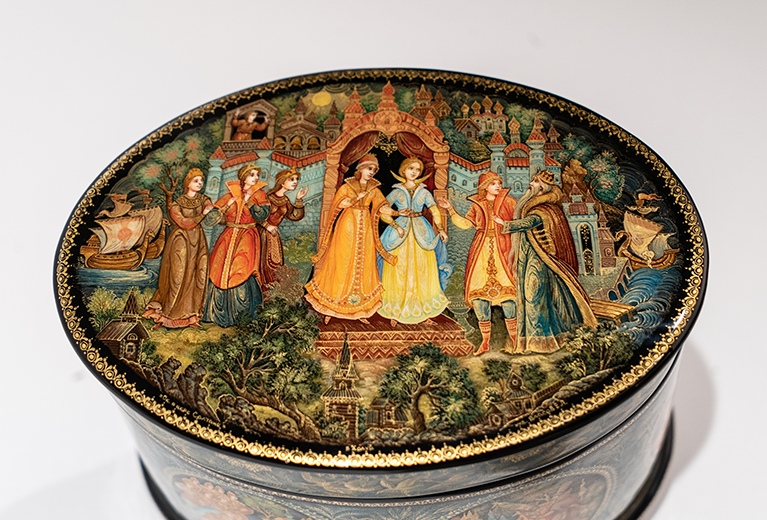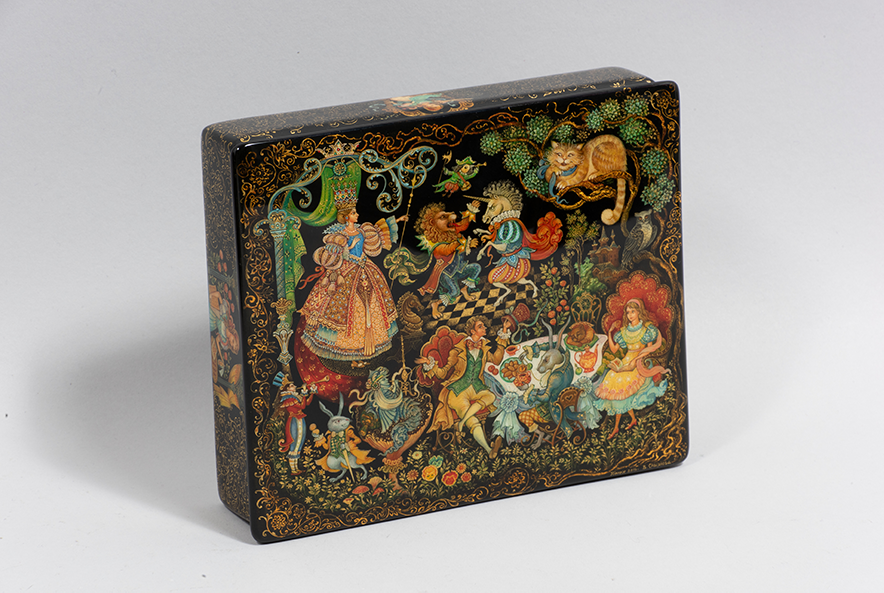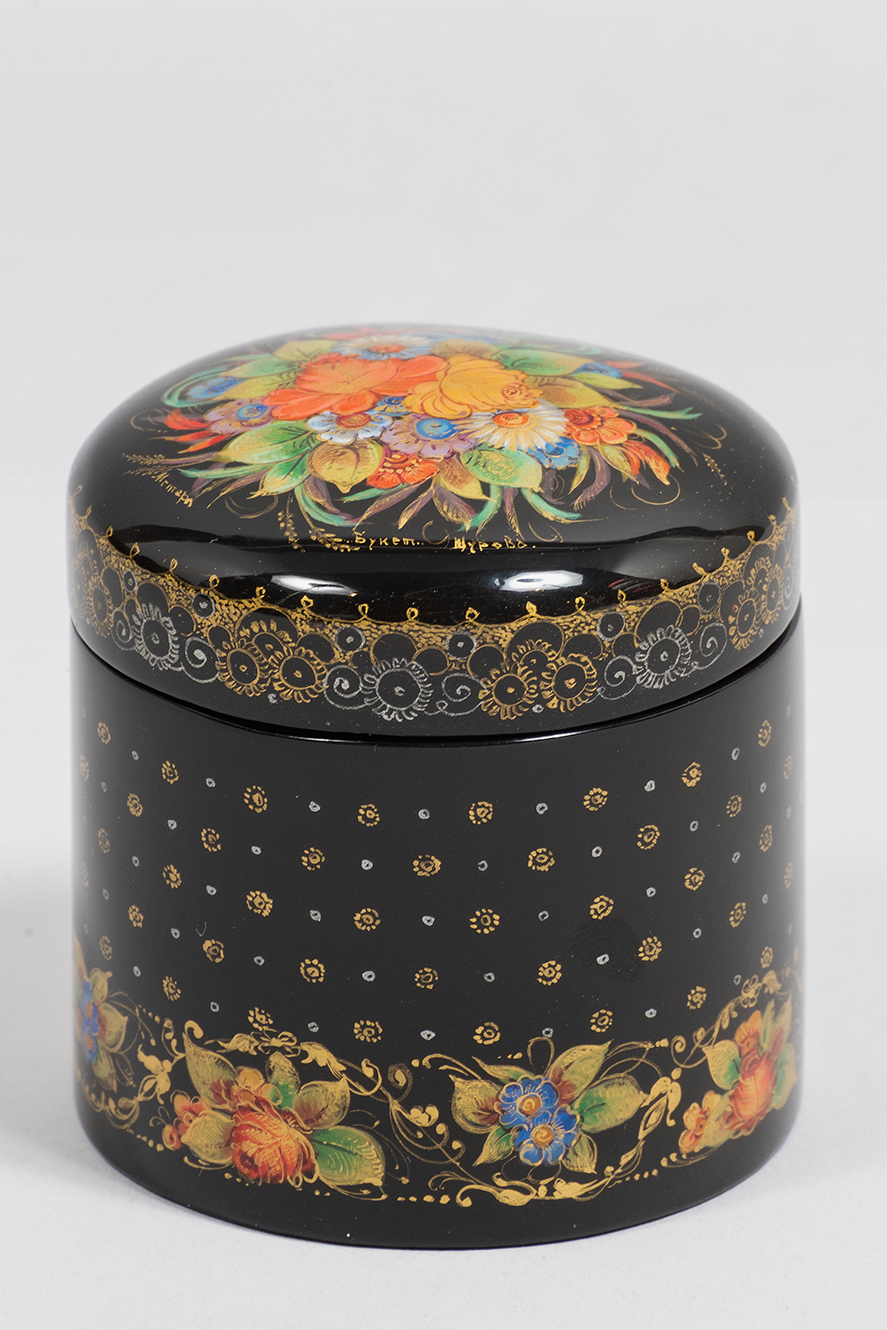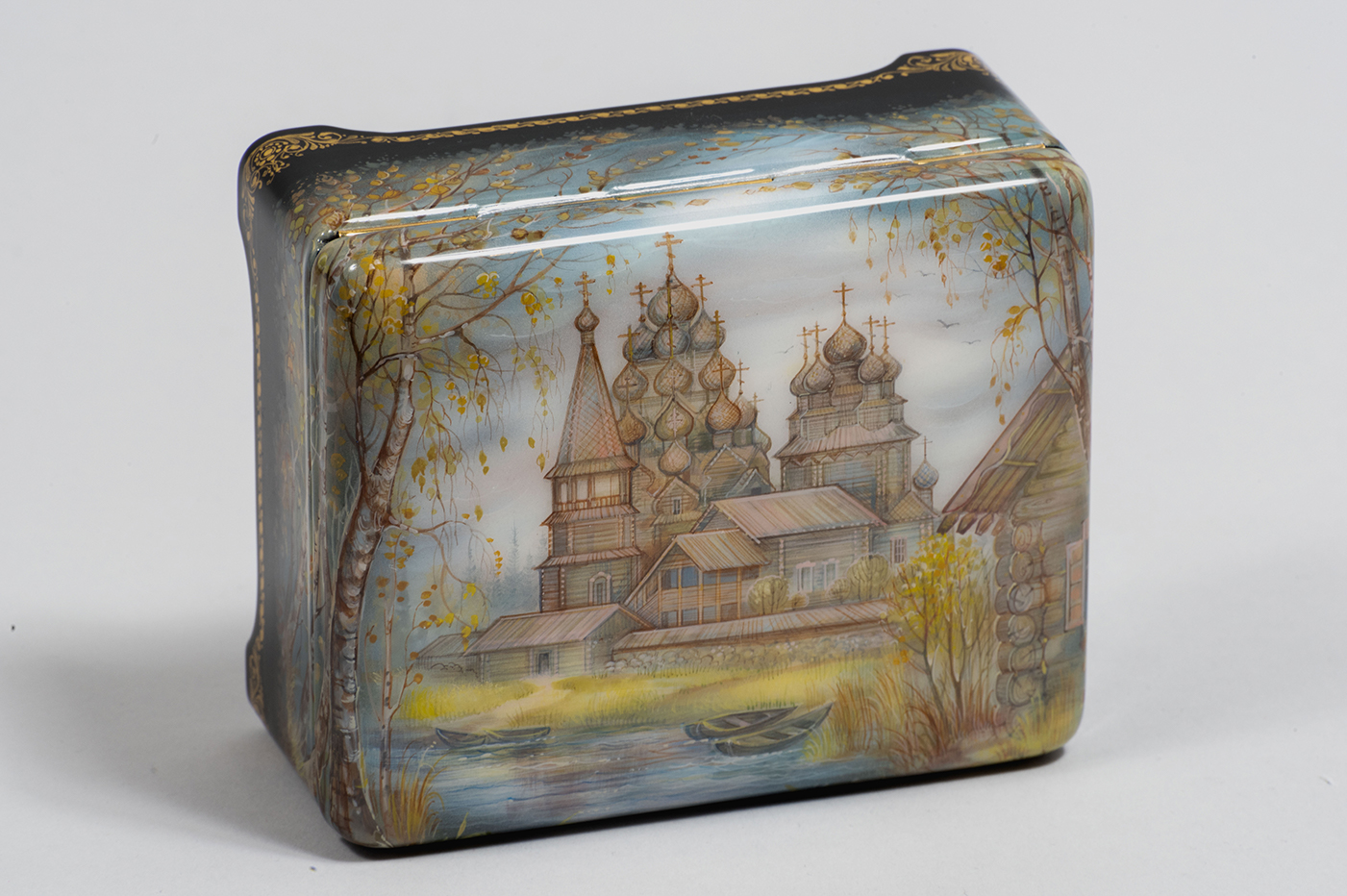
«Kizhi» Komyakov Y, papier-mache, tempera, Kholui
«Kizhi» is an amazing beautiful island, located in the Omega Lake in Carelia. This inhabited from the old times island is considered to be a very beautiful architectural museum. The Church of Transfiguration of the Lord, surrounded by nature is depicted in the box.
This art work was made by professional artist from Kholui. All the tiniest details were made with a one hair brush and egg tempera. The technique of miniature painting is very old and keeps a piece of Russian soul.
Size: 11cm long, 9cm wide and 5cm high.
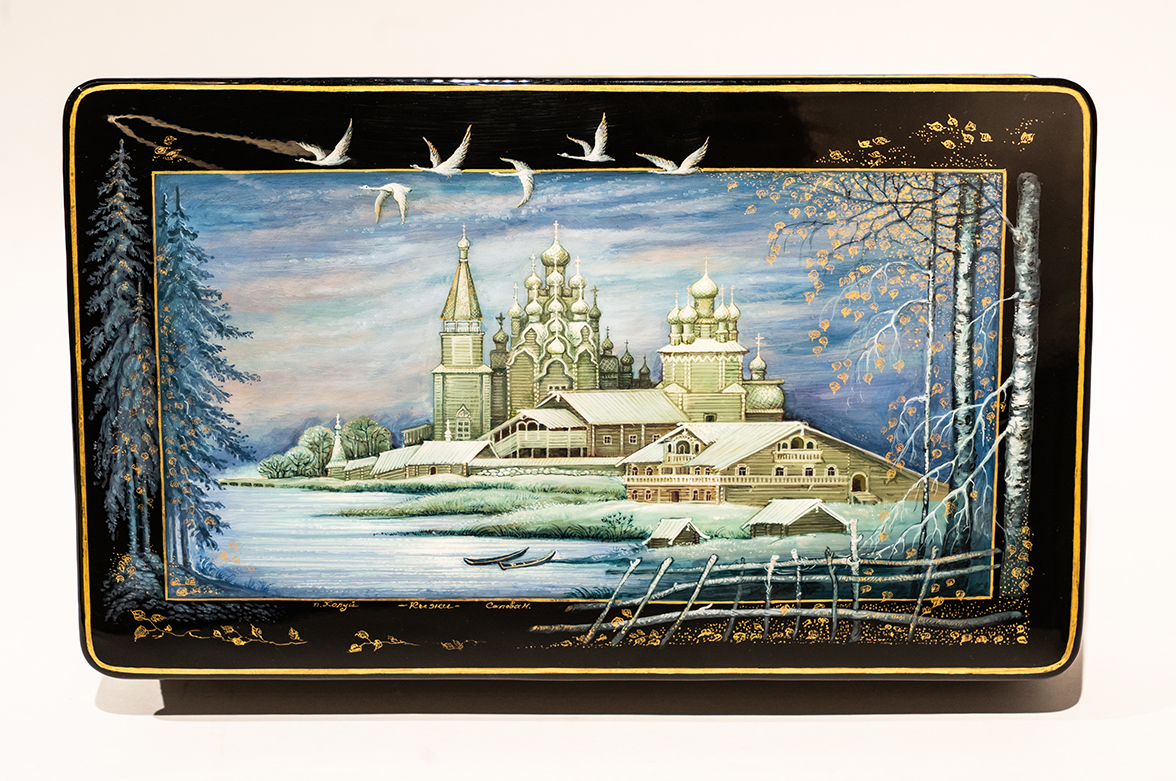
«Kizhi» Salova N., papier-mâché, tempera, Kholui, 2019
Artistic hand made work, created by professional artist from Kholui. Kizhi is one of the most beautiful places in Russia, an amazing museum under the open sky. The main attraction here is the Church of the Transfiguration, which is also depicted on the box. Famous cities and buildings often become the main subject of Kholui art works. All the details are made using one hair brush. The box was constructed from papier-mâché and painted using tempera paints. It is also signed by the artist and covered with several layers of lacquer.
Size: 26cm long, 15,5cm wide, 5cm high
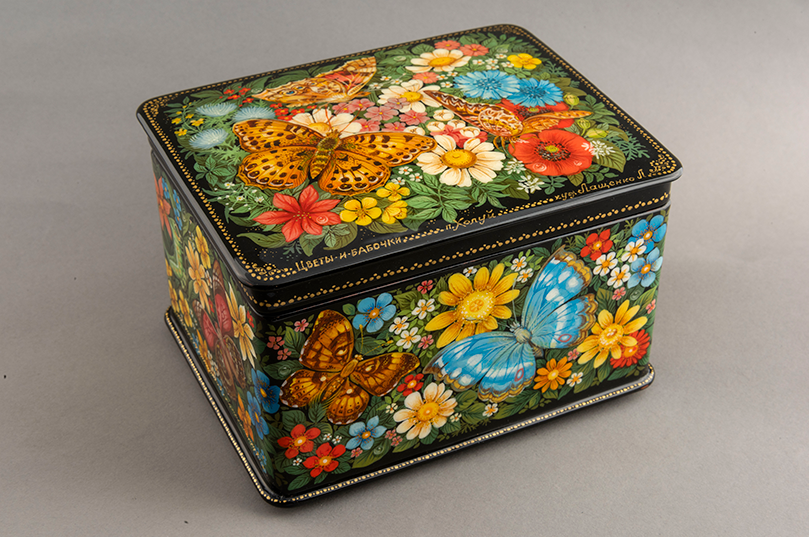
«Flowers and butterflies», Laschenko L, papier-mâché, tempera, Kholui
Bright summer work made by a professional artist from Kholui.
The Kholui school is characterized by the use of any color combinations and solutions. So bright and rich colours can be painted right on a black background. The artist uses an ancient recipe for mixing paints, which has been passed on from generation to generation by great masters. The basis of tempera paints is egg powder, with the addition of mineral powder and vinegar. The painting was made with the tiniest squirrel brushes, then covered with several layers of natural lacquer.
As we can see, the creation process is really not easy and original. Such an amazing work keeps a piece of Russian soul and part of Russian applied art history.
Size: 12cm long, 9,5cm wide and 8cm high.
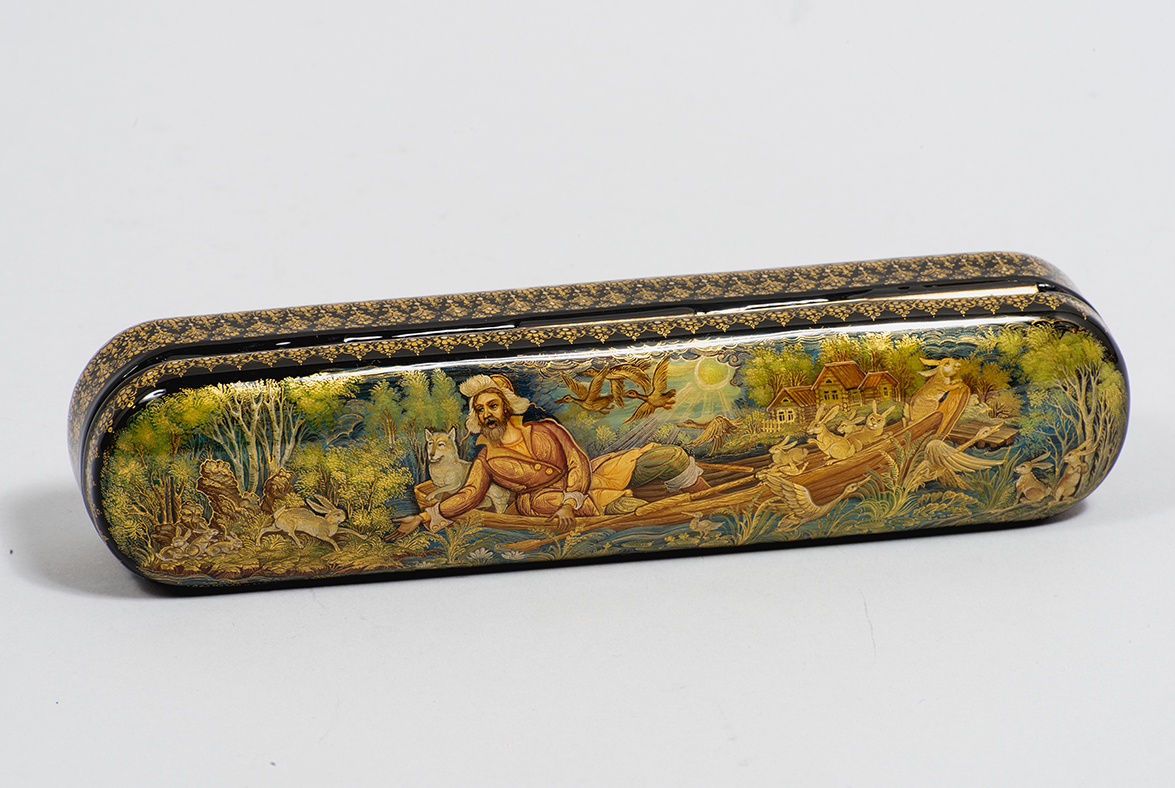
«Grandpa Mazzei and hares» Vlasov E.A., papier-mâché, tempera, gold leaf, silver, Kholui, 2019
Unique artistic work made by one of the brightest representatives of the Kholui school Evgeniy Vlasov. Many artist depict different episodes from fairy-tails on the miniatures. Here the artist showed the poem made by Nekrasov. Grandpa Mazzei and the hares is a story about one kind old man who saved little animals on his boat.
The box shines from all the sides. The artist made this effect using gold and silver leaf. Egg tempera with coloured pigment was used as a paint.
Size: long 18cm, wide 3,5cm and high 4cm.
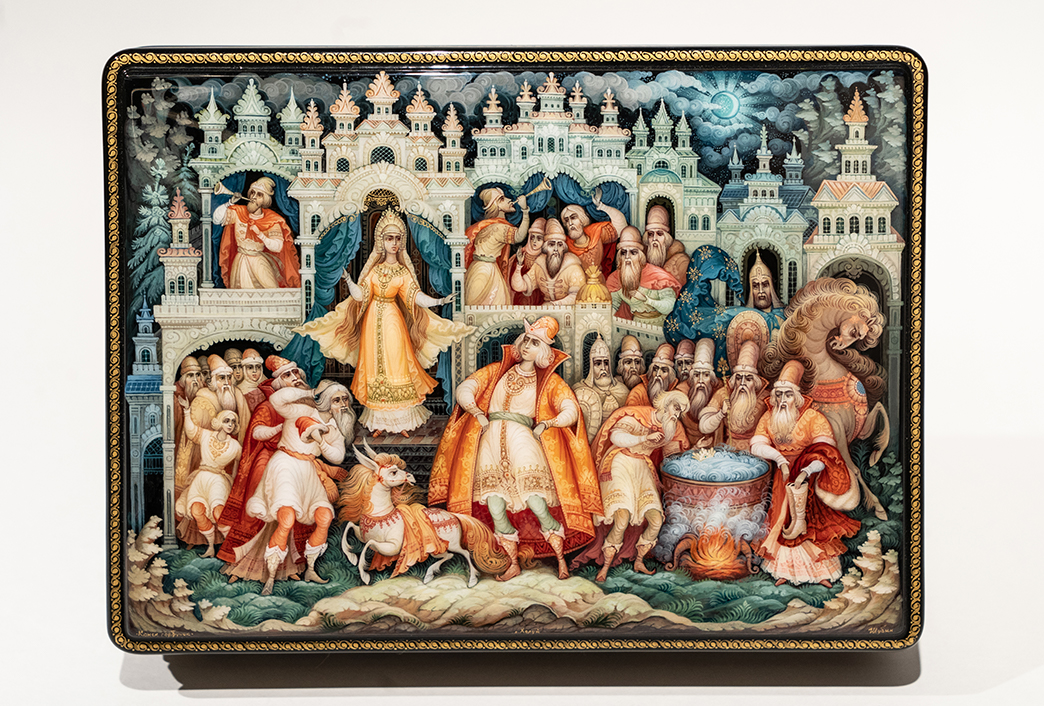
«Little magic horse» Shubin N, papier-mâché, tempera, Kholui, 2017
Bright artistic work, made by professional artist. He creates funny images that make his style very recognisable. The colours of his works are very bright and the painting is full of details. The artist depicted episodes from a famous fairy-tale.
«Little Magic Horse» is a Russian fairy tale, written by Petr Ershov. Main characters are peasant’s son Ivan the Fool, who can be found in many Russian folklore compositions, and Little Magic Horse. The little one helps Ivan to go through all the difficulties, become a Tsar and marry a beautiful Princess.
The box is made of papier-mâché, hand painted with tempera pants and covered with several layers of lacquer.
Size: 20cm long, 15cm wide and 5cm high
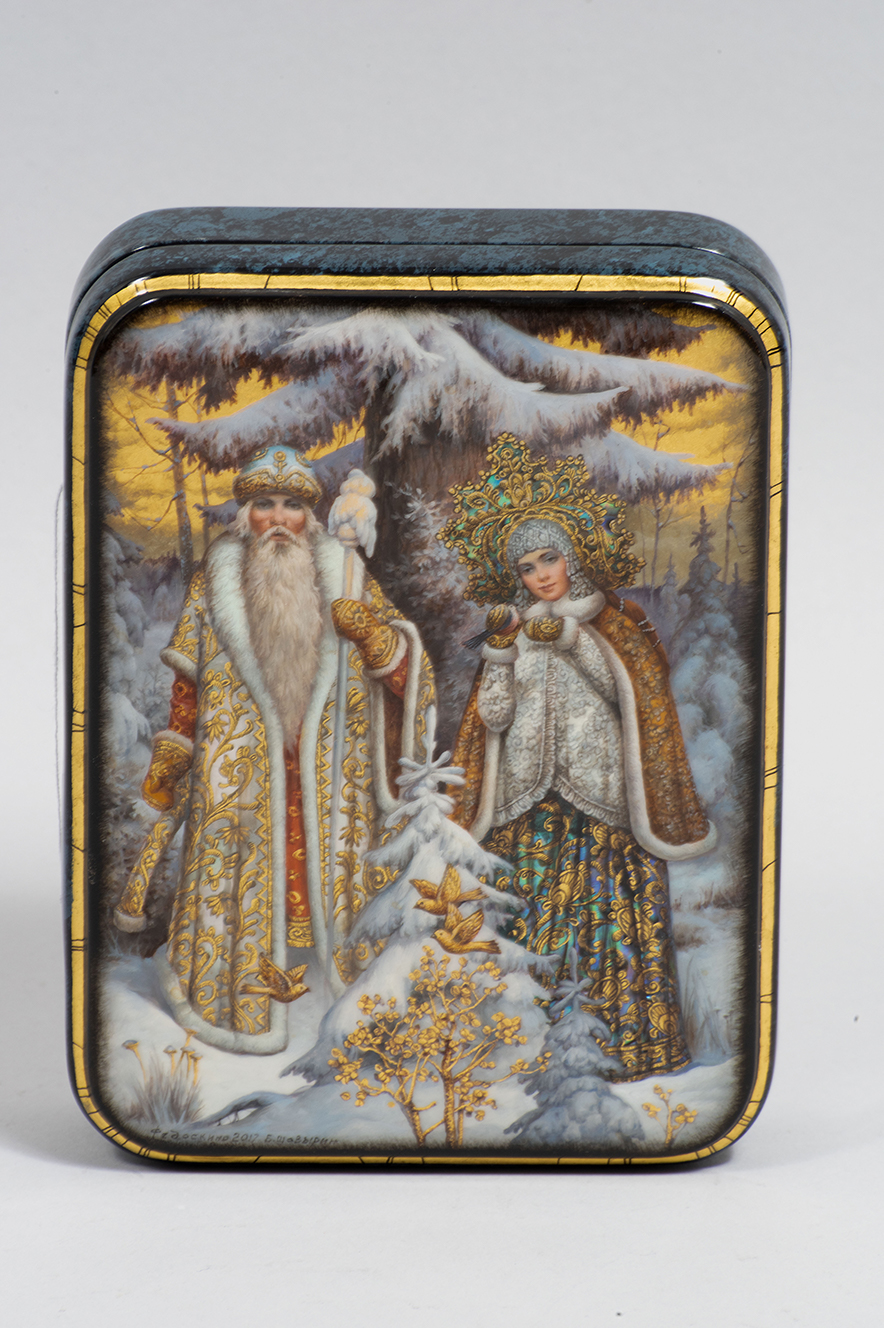
«Father Frost and Snow-maiden», Shavyrin, papier-mâché, oil, Fedoskino
Boris Shavyrin is one of the brightest representatives of the Fedoskino school. His art works are very special and sophisticated, that’s what make them so exclusive among the connoisseurs. It takes at least several months to create such a quality lacquered box. The process of making is hard and requires a lot of skills and experience from the artist. Drawing is made with a one hair brush using magnifying glass. His subtitled vivid brushstrokes absorb several shades of colour, capturing the changing moment in the fluid change light.
The artist used the original Fedoskino technique, when the artist puts special reflective material, like metallic powder and mother of pearl. Shining through the transparent layers of glaze paints, such linings give the image a special depth and glow effect.
Size: 15cm long, 11cm wide.
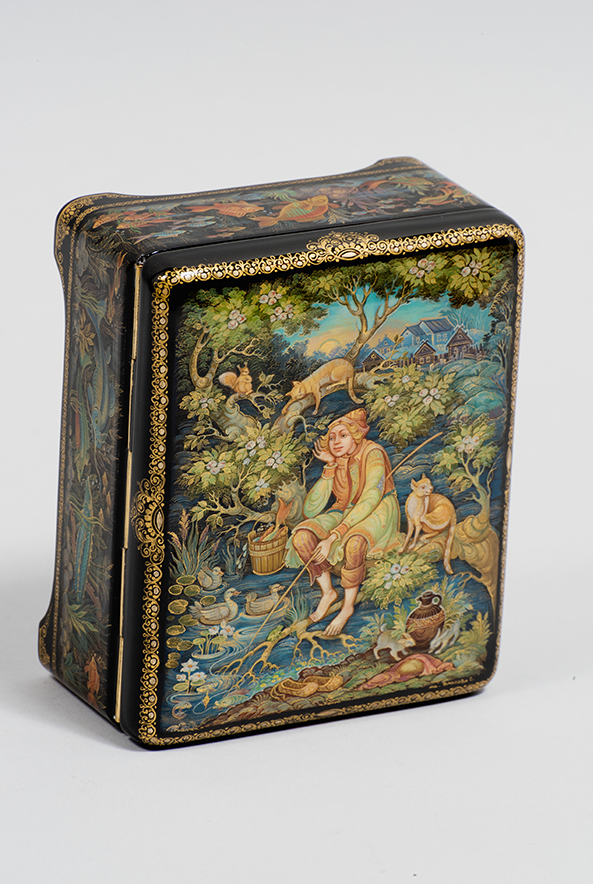
«Fisherman», Vlasova E, papier-mâché, tempera, gold and silver leaf, Kholui, 2019
Lacquer miniature painting of Kholui is a very unusual and original part of decorative and applied arts. This art appeared on the base of icon painting in 1932.
The unique box «Fisherman» was made by a very outstanding artist. We may notice an amazing shine of the box, which was achieved by putting gold and silver in the paints.
The stages of creation are strictly sequential: firstly, the base is primed, then covered with black and red lacquer, then comes the most amazing stage - painting. Paints are mixed according to an old special recipe that has been passed on by craftsmen from generation to generation. The gold ornament is created using gold leaf with the addition of cherry resin, which gives the work a special originality. The finished box is covered with several layers of natural lacquer and used to give the item a perfect shine.
Size: 11cm long, 9cm wide and 4,5cm high.
Total:
Checkout $16,658.00

